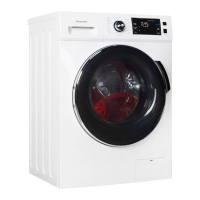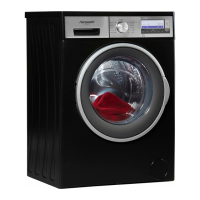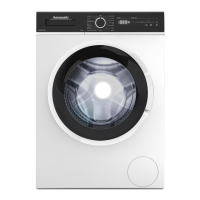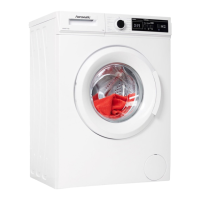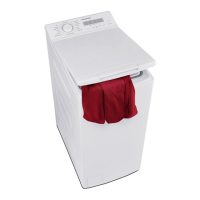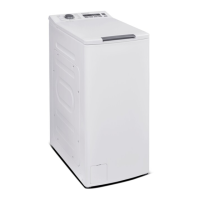Page GB-27
Installing and connecting the washing machine
2. Screw the other end of the supply hose
hand-tight onto the water valve.
3. Open the valve completely and check
whether the connections on the appliance
and on the valve are sealed.
4. Then close the valve again.
Creating an electrical
connection
WARNING!
Risk of electric shock!
Touching live parts may result in severe
injury or death.
■ Do not put into operation if the
mains cord is faulty or the appliance
displays other visible damage.
■ Do not operate the appliance with an
external timer or a separate remote
control system and do not connect to
a multi-socket.
• Insert the mains plug into an easily acces-
sible, properly installed and fused earthed
socket (220-240 V, 50 Hz, 10 A).
Carry out a test run
The appliance requires an initial wash cycle
without laundry, but with detergent. The aim
of this is to rinse out possible residues from
production.
Requirements
– You have read the “Safety” chapter from
page GB-4 and understand all the safety
instructions.
– The transportation packaging is removed
and the appliance is prepared as described
in chapter “Installing and connecting the
washing machine” on page GB-23.
– The inlet hose (b) and the outlet hose (15)
are properly connected.
Any residual water merely indicates that
the washing machine function was fac-
tory tested.
1. Check whether the inlet hose (b) and the
outlet hose (15) are securely connected.
2. Open the valve completely.
3. Make sure that the drum is empty.
4. Push the appliance door tightly closed.
(31)
Liquid detergent Powder detergent
5. Adjust the partition (31) depending on the
detergent you are using.
6. Dispense detergent into the left chamber
II in accordance with the manufacturer
instructions.
